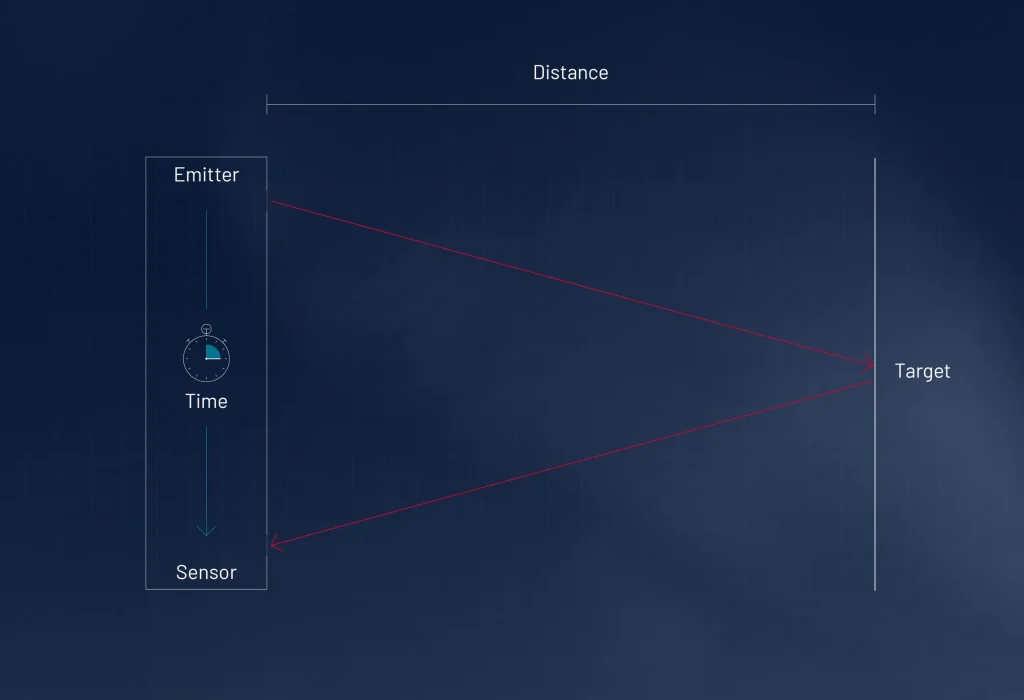Bettina Maetzler, product manager for Ultisense OEM solutions, shares her insights into the successful Safran Vectronix Laser Rangefinders and explains the subsequent benefits for the user and for integration.
How did laser distance measuring begin?
In the 1960s the development of measuring a distance with laser started with the TOF (Time-of-flight-Method) using a single laser pulse. Here, a laser pulse was emitted by a laser rangefinder module and this beam was reflected by an object back to the module’s receiver after a certain time.
With the speed of light known and an accurate measurement of the time taken, the distance could be calculated. Today, 60 years later, most distance measurements are still based on the TOF principle.

Can you tell us about the multi-pulse technology Safran Vectronix uses today?
The single-pulse-measuring technology was then further developed and experiments with multi-pulse-measuring technology began. Safran Vectronix was a trailblazer in this development, recognizing that the multi-pulse technology, which is also based on the extreme reliable TOF method, showed tangible advantages for the end-users for their own handheld devices. Jitter or the slightest handshake is always a problem for a soldier when aiming with a handheld device on a target. If the single measurement pulse does not hit the object, because of shaking, you will not get a proper measuring result. This is where the multi-pulse technology opens up decisive advantages, as it considerably improves the hit-target probability. This is important for handheld and many other mobile systems.
How does the multi-pulse technology work?
Unlike the single-pulse-measuring technology, the multi-pulse-measuring technology in Safran Vectronix laser rangefinders sends not only one single laser pulse for measuring but a series of extremely short laser pulses (nanoseconds) to the target. In total the duration of one multi-pulse-measurement takes approx. 300 – 800 ms – depending on the module.
At the target, the multi pulses are reflected to the highly sensitive receiver of the module. The receiver starts sampling the different echo pulses and together with our highly sophisticated measuring algorithms reliable distances are calculated – and this works, even if only few laser pulses were reflected due to shaking (jitter). In addition, thanks to the underlying software algorithms, you can display up to five distances and sort them by significance (e.g., if the laser beam hits several targets in the same direction with just one measurement).
Is it possible to measure continuously with a multi-pulse laser, e.g., if I want to track a vehicle?
Yes, this technology is ideal for continuous object tracking. Our newest laser rangefinders enable continuous measuring without any breaks at a frequency up to 10 Hz.
The energy that a laser can emit within a certain time is generally limited by the requirements of laser safety (class 1). The allowed energy is the same for both technologies. However, with a single-pulse laser, the allowed laser energy is “shot” all at once, resulting in much higher current peaks in the electro-optical system and therefore creates more wear and tear.
Additionally, after one or more “shots”, a single-pulse laser must pause as it needs some time to cool down and recharge for the high energy required for the next shot. Here the multi-pulse technology offers an important benefit: A multi-pulse laser can work continuously without any breaks, which is highly beneficial for tracking an object.
Does the multi pulse technology has an impact on the integration?
It does. There is one big difference, and this relates to the high power peaks a single pulse module need. With a multi pulse laser, there are no such extreme current peaks and therefore the entire host system is less stressed. The heat generation is also lower and therefore fewer precautions are necessary for heat dissipation in the overall system. Overall, the result is that all Ultisense laser range finders are maintenance-free. In the contrary, for single-pulse lasers it is recommended to check them regularly, as they are always pushed up to the limit.
Is it possible to measure longer distances, e.g., more than 10 km, with a multi-pulse laser?
Yes, sure, it is possible to measure also long distances with a multi-pulse LRF, even if they do not have such high energy peaks as single-pulse lasers. Usually, the multi-pulse LRFs are even smaller than single-pulse LRFs, as they do not need any space for capacitors.
Safran Vectronix is one of the few companies which is capable of using fiber lasers for range finders. This results in a very stable high peak power output at high repetition rates, which improves the measurement for large distances. This enables us to transfer the advantages from the well-known diode lasers for short distances to high distances above 10 km. Today, we are happy to offer reliable, small and price efficient modules also for high distances.
